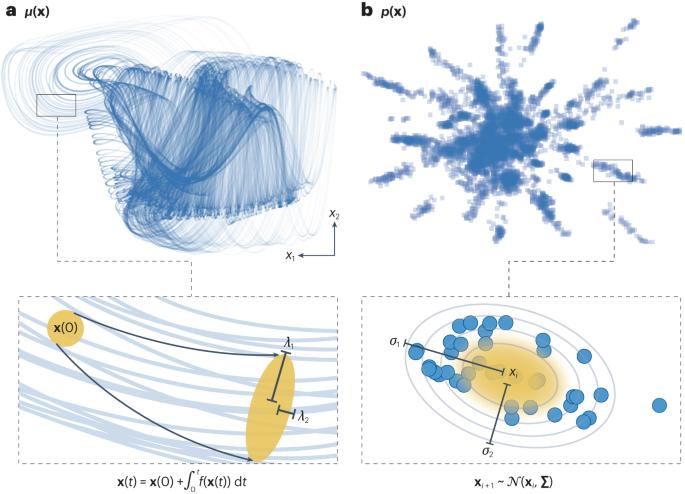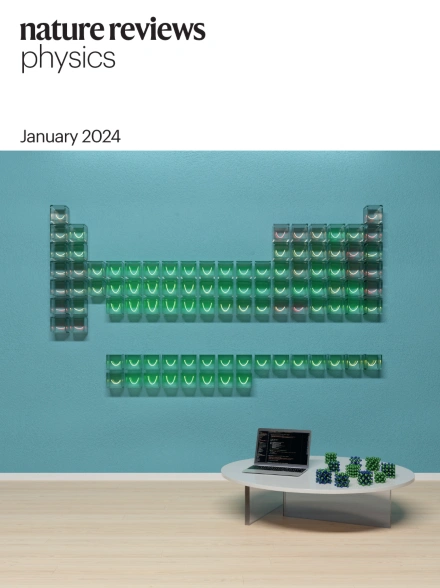非线性动力学的生成学习
IF 44.8
1区 物理与天体物理
Q1 PHYSICS, APPLIED
引用次数: 0
摘要
现代生成式机器学习模型能够创建远远超出其训练数据的逼真输出,例如逼真的艺术作品、精确的蛋白质结构或会话文本。这些成功表明,生成模型能够有效地对任意复杂的分布进行参数化和采样。从半个世纪前开始,非线性动力学的奠基之作就利用信息论的工具实现了类似的目的,即从现实世界的时间序列中推断混沌吸引子的特性。本视角文章旨在将这些经典著作与大规模生成统计学习中的新兴主题联系起来。文章特别关注两个经典问题:给定部分测量值重建动态流形,这与现代潜变量方法相似;推断复杂数据集背后的最小动态图案,这反映了训练模型的可解释性探测。本文章由计算机程序翻译,如有差异,请以英文原文为准。


Generative learning for nonlinear dynamics
Modern generative machine learning models are able to create realistic outputs far beyond their training data, such as photorealistic artwork, accurate protein structures or conversational text. These successes suggest that generative models learn to effectively parametrize and sample arbitrarily complex distributions. Beginning half a century ago, foundational works in nonlinear dynamics used tools from information theory for a similar purpose, namely, to infer properties of chaotic attractors from real-world time series. This Perspective article aims to connect these classical works to emerging themes in large-scale generative statistical learning. It focuses specifically on two classical problems: reconstructing dynamical manifolds given partial measurements, which parallels modern latent variable methods, and inferring minimal dynamical motifs underlying complicated data sets, which mirrors interpretability probes for trained models. Generative machine learning models seek to approximate and then sample the probability distribution of the data sets on which they are trained. This Perspective article connects these methods to historical studies of information processing and attractor geometry in nonlinear systems.
求助全文
通过发布文献求助,成功后即可免费获取论文全文。
去求助
来源期刊

Nature Reviews Physics
Multiple-
CiteScore
47.80
自引率
0.50%
发文量
122
期刊介绍:
Nature Reviews Physics is an online-only reviews journal, part of the Nature Reviews portfolio of journals. It publishes high-quality technical reference, review, and commentary articles in all areas of fundamental and applied physics. The journal offers a range of content types, including Reviews, Perspectives, Roadmaps, Technical Reviews, Expert Recommendations, Comments, Editorials, Research Highlights, Features, and News & Views, which cover significant advances in the field and topical issues. Nature Reviews Physics is published monthly from January 2019 and does not have external, academic editors. Instead, all editorial decisions are made by a dedicated team of full-time professional editors.
 求助内容:
求助内容: 应助结果提醒方式:
应助结果提醒方式:


